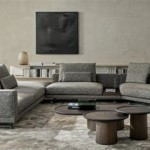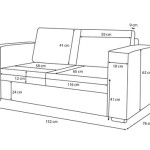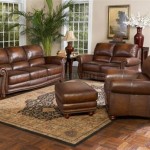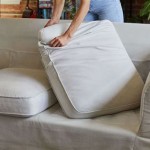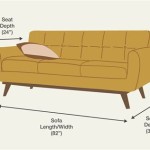Sectional Sofa Connectors: Ensuring Stability and Style
Sectional sofas offer versatility and comfort, allowing homeowners to configure their seating arrangements to fit their living spaces. A crucial component ensuring these configurations remain secure and aesthetically pleasing is the sectional sofa connector. These often-unseen mechanisms play a vital role in maintaining the sofa's structural integrity and preventing unwanted separation between sections.
Various types of sectional sofa connectors cater to different sofa designs and connection needs. Understanding these different types can be beneficial when assembling, disassembling, or troubleshooting issues with a sectional sofa. One common type utilizes interlocking brackets. These brackets, typically made of metal or heavy-duty plastic, attach to the frames of adjoining sections. One bracket features a hook-like protrusion, while the other has a corresponding slot. When pushed together, they create a secure link, preventing the sections from shifting apart.
Another frequently used connector type involves a latching system. This system employs small metal latches that are mounted on the underside of the sofa frame. These latches grab onto corresponding catches on the adjacent section. This method offers a quick and easy connection, facilitating effortless assembly and disassembly. Some latching systems incorporate adjustable tension, allowing users to customize the tightness of the connection for optimal stability.
A more basic, yet effective, connection method involves simple interlocking wooden or plastic pieces. These pieces, often part of the sofa frame itself, slot together, relying on friction and a snug fit to maintain the connection. While generally less robust than bracket or latch systems, this method is often found in less expensive or lighter-weight sectional sofas.
Beyond the primary connecting mechanisms, some sectional sofas incorporate additional stabilizing elements like connector straps or clips. These straps, typically made of heavy-duty webbing, connect the frames of adjoining sections, adding an extra layer of security against separation. Connector clips, often plastic or metal, clamp onto the bottom edges of the sofa frames, providing additional support and preventing slippage.
Selecting the appropriate connector type depends on several factors, including the sofa's design, weight, and intended usage. Heavy, frequently used sectionals benefit from robust bracket or latch systems, while lighter, less frequently rearranged sofas might suffice with simpler interlocking pieces. Consulting the sofa's manufacturer guidelines is crucial for determining the recommended connector type and ensuring proper installation.
Over time, sectional sofa connectors can experience wear and tear, leading to instability and separation. Regular inspection and maintenance can help prevent these issues. Checking for loose brackets, damaged latches, or worn straps should be part of routine furniture care. Tightening loose screws, replacing damaged components, or adding supplementary support can significantly extend the lifespan and functionality of the sofa.
When replacing or upgrading sectional sofa connectors, compatibility is paramount. Mismatched or incorrectly installed connectors can compromise the sofa's stability and potentially damage the frame. Consulting the manufacturer's specifications or seeking professional assistance ensures the chosen connectors are appropriate for the specific sofa model.
Troubleshooting common connection issues often involves simple solutions. For loose connections, tightening screws or adjusting latch tension may suffice. For broken or damaged connectors, replacement parts are often readily available from the manufacturer or furniture hardware suppliers. When dealing with persistent issues, seeking professional upholstery or furniture repair services is advisable.
Understanding the different types of sectional sofa connectors, their function, and maintenance requirements is crucial for maintaining the stability, functionality, and longevity of sectional sofas. By selecting the appropriate connector type and implementing proper care practices, homeowners can ensure their sectional sofas remain comfortable, secure, and visually appealing for years to come.
Beyond simply connecting sections, these connectors contribute to the overall comfort and stability of the sofa. A secure connection ensures a level seating surface, preventing uncomfortable gaps or dips between sections. This is especially important for larger sectionals where unevenness can significantly impact seating comfort.
The evolution of sectional sofa connectors reflects advancements in furniture design and engineering. From basic interlocking pieces to sophisticated latching systems, these connectors have become increasingly robust and user-friendly. Innovations in materials and design continue to improve the functionality and durability of these essential components.
In the context of modern furniture design, sectional sofas represent a versatile and adaptable seating solution. Their modular nature allows for customization and reconfiguration to suit evolving living spaces and lifestyle needs. The effectiveness and reliability of sectional sofa connectors are essential for realizing the full potential of this popular furniture style.

4pcs Sectional Couch Connectors Universal Sofa Interlocking F1r8
Sectional Sofa Connection With Snap Lock Couch Clips Furniture Connector Fastening For Ee Singapore

Couch Clamp Sectional Connectors For Sliding Sofas 4 Pack 3 Piece Sofa

4pcs Sectional Couch Connectors Universal Sofa Interlocking F1r8

Sofa Snap Sectional Couch Connector

Recliner Sofa Suite Joint Connector Single Pin Type For Sectional Furniture

4pcs Sectional Couch Connectors Universal Sofa Interlocking F1r8

10pcs Sectional Couch Connectors Vadania De

Yanyang Chinese Manufacturer Metal Joint Sectional Sofa Connectors Furniture Accessories China Made In Com

Tech Team S 00882 Alligator Style Snap Sofa Connector Set

